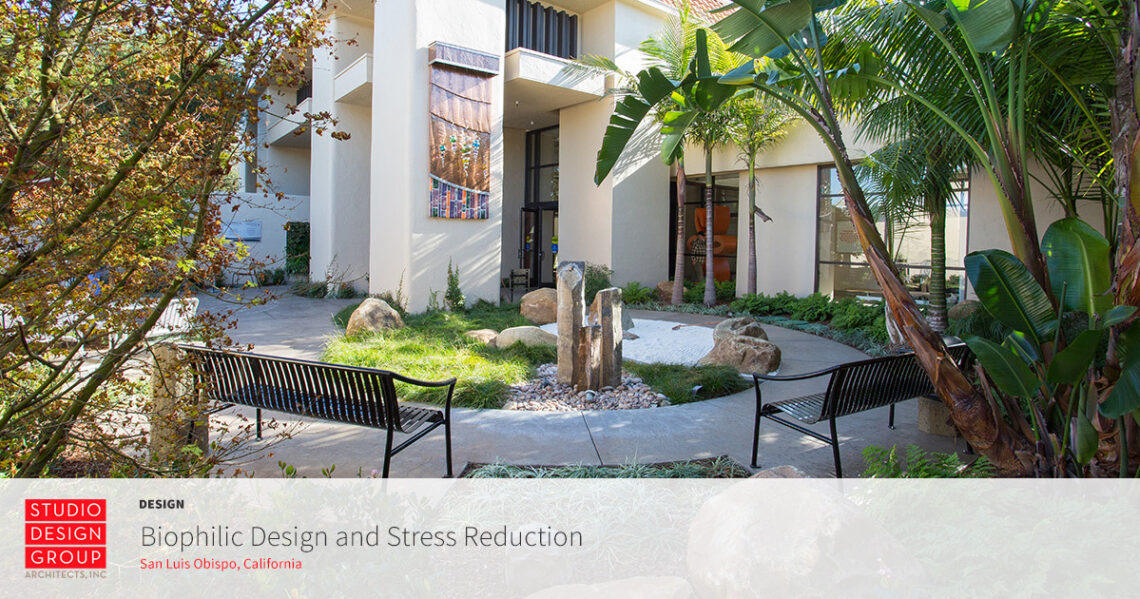
In our December blog, we discussed some of the more important design trends to watch for in the coming year. While many of this year’s designs were influenced by recent events, Studio Design Group architects would like to examine the benefits of Biophilic Design a little more closely, as it seems to be less of a trend and more of a new thought direction in architecture.
The concept behind Biophilic design is the idea that nature can nurture. We humans have an instinctual need to be connected to the natural world, yet most of us spend the majority of our lives in closed spaces. Consider how you feel when you’re hiking in the hills or walking on the beach. Most of us are happier, more relaxed, and less stressed after spending some time outdoors. By purposefully bringing natural elements into our living and working spaces, we can make them more comfortable and healthier to occupy.
Biophilia integrated into a design can impact our mood, our productivity, even our health. Numerous studies have shown that when provided with more access to natural environments, people found that they were healthier, more focused, and had milder symptoms of anxiety and depression. Improving privacy, acoustics, views, and lighting have all been shown to reduce stress, and have a positive effect on our psychological health and performance.
When implementing biophilic design into homes and public spaces, there are two foundational concepts to keep in mind:
Direct experiences
Bringing a direct experience of nature means bringing life and light into the space in ways that feel instinctive and effortless. Any element that brings a true natural experience to a space, such as plants, natural light, water, and airflow, is a direct experience, especially when integrated into walls, furniture, and structural elements.
Indirect experiences
Indirect experience can include photographs and other images of nature, use of organic materials such as stone, water features, and raw fibers and wood. Natural sounds, such as birds, or ocean waves can also represent an indirect experience of nature.
The earliest adopters of biophilic design have been architects who specialize in offices and co-working spaces, followed closely by designers of hospitals and healthcare facilities. They understood early on that creating a space that mimics the natural world can not only reduce stress, but it can promote healing and save money. Focusing less on the space and more on the needs of the humans who inhabit it has shown such promising results that biophilic design is permeating the building industry.
You can find more information about positive effects of Biophilic Design here. And if you would like to incorporate biophilic design into your next project, give Studio Design Group architects a call at 805-541-3848 or reach out online.
